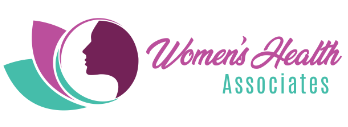
The American Academy of Pediatrics recommends that infants be exclusively breastfed for about the first 6 months. But although the benefits are so well-known, rates of breastfeeding vary widely in the United States.
This is because, like many aspects of womens health, there is a good deal of misinformation about breastfeeding and how it fits into early childhood care. And many women face barriers that make it difficult or impossible to breastfeed to the extent they would like.
So as August is designated Breastfeeding Awareness Month, now is a great time to take a look at the benefits of breastfeeding for both mother and child, and how you can be more successful at practicing it.
Raising Breastfeeding Awareness
Breastfeeding is a part of obstetrician care. This is a school of healthcare that deals with all things related to childbirth. In this case, postpartum care.
Because of the benefits that successful breastfeeding can impart to both mother and child, it’s an essential component of a comprehensive care plan.
For the child, breast milk is a complete nutritional product. Habitual breastfeeding is linked to a reduced incidence of infections in newborns.
They also tend to experience reduced rates of chronic health conditions like diabetes and are at lower risk of sudden infant death syndrome.
Meanwhile, the mother benefits from the increased release of oxytocin. Among other benefits, this hormone helps the body recover after childbirth. There is also some evidence that breastfeeding women are at lower risk of chronic conditions like type 2 diabetes, heart disease, high cholesterol and triglycerides, arthritis, and high blood pressure.
Successful Breastfeeding Tips
With those benefits, you would imagine everyone would breastfeed. Unfortunately, many women struggle to do so. Both physiological challenges and a newborn’s intensive feeding schedule can make breastfeeding difficult.
A newborn may need to be fed as many as 12 times a day. For mothers who work, it can be difficult or even impossible to work around this schedule.
Other mothers suffer from discomfort or pain while feeding. And medications or dietary restrictions can likewise make it impractical.
Fortunately, we have some tips that can help.
First, the mother and the child both need to get comfortable. For Mom, finding a seat or position that offers ample back, neck, and shoulder support is a must. For Baby, make sure that they’re aligned tummy-to-tummy and properly supported.
It’s up to the mother to guide an infant into place. Lift them towards the breast instead of craning over to reach them. Doing the latter can cause unnecessary back and neck strain.
To encourage them to suckle, place the nipple near their mouth and run it along the outside of their lips. This should trigger a wide yawn from the infant. This is the prime opportunity to create a secure latch.
It can be difficult for first-time mothers to master the technique. If you find yourself struggling, reaching out to a consultant or taking a breastfeeding class is a great way to practice and get comfortable.
A Month to Focus on Womens Health
Breastfeeding helps foster a strong bond between mother and child, boosts the child’s health and immunity, and helps the mother recover faster from childbirth.
It should be a component of any comprehensive approach to womens health. Yet because of the challenges it can pose, many are forced to forgo it. So if you find yourself struggling to meet your breastfeeding goals, contact us to learn more about specialist care and breastfeeding classes in Boise.

